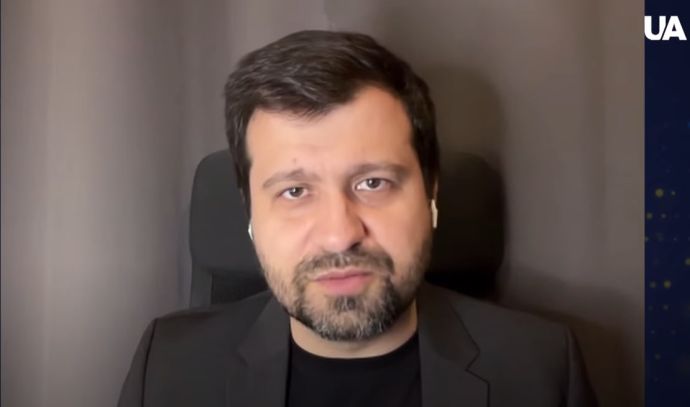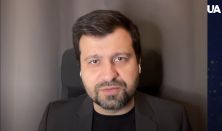Join Sergiy Sumlenny, Eastern Europe politics expert, as he discusses the geopolitical implications of Russia’s strike on Dnipro using an ICBM in the UATV studio. Learn about the broader context of nuclear escalation and symbolic attacks amidst rising tensions in the Russia-Ukraine war.
— My first question will be quite obvious. About the missile escalation just a couple of days ago. We’ve heard about the Biden administration giving a green light to use Western-made cruise missiles and ballistics against Russian targets. There’s been an alleged strike on a Russian-North Korean compound in Kursk. And on the night of November 21st, Russia, for the first time in human history, reportedly used an intercontinental or medium-range ballistic missile with multiple warheads against a civilian city. What do you think about that?
— Well, first of all, we need to clear this situation from all the propaganda aspects Russia tries to add to our analysis. I don’t see that any strike by Storm Shadow missiles against targets in the Kursk region changes anything in terms of Ukraine’s legal and fair self-defense under the UN Charter.
From the Russian perspective, Ukraine strikes what they claim as their territory all the time—Zaporizhzhia, Donetsk, Luhansk regions, and Crimea. Russia asserts these as their own, yet Ukraine targets them regularly, as they are occupied territories. Recently, internationally recognized parts of Russia, like the Kursk region, have come under legitimate Ukrainian attacks using Western weapons. For three months, Western tanks and IFVs have legally been used to defend Ukraine. This hasn’t prompted Russia to deploy additional missiles before.
So, why did Russia choose to use such a terrible weapon now—a missile designed to deliver nuclear warheads? This escalation isn’t about Kyiv, President Zelenskyy, or even Ukraine; it’s aimed at Washington, Berlin, and other Western capitals. Russia wants to exploit Western fear of nuclear confrontation. By using a missile designed solely for carrying nuclear warheads, they are sending a message: “We can do this; think twice about your support for Ukraine.”
This act reflects Russia’s fear of defeat. Their hope lies in instilling enough fear to make the West stop supporting Ukraine. Perhaps it was symbolic, too—an ill-timed message since November 21 marks anniversaries of Ukraine’s Orange Revolution and Euromaidan Revolution, pivotal moments in breaking away from Russian influence.
— Why do you think Russia deliberately targets Ukraine on symbolic dates?
— Russia often strikes on Ukrainian national holidays or commemorative dates to add psychological weight to their attacks. It’s part of their playbook. However, the main reason for the Dnipro strike isn’t symbolism but to intimidate the West.
Russia’s messaging, through this and Putin’s speeches, isn’t directed at Ukraine—it’s aimed at the West. For example, Putin didn’t address the Ukrainian government or people during his recent lengthy speech, unlike in February 2022 when he announced the invasion. His audience is Western leaders.
For Ukrainians, these strikes, while tragic and destructive, don’t lead to surrender. If anything, they strengthen our resolve. If this escalation results in the West providing long-range missiles like Tomahawks or more Patriot air defense systems, it will only reinforce Ukraine’s ability to defend itself.
This missile strike crossed a red line—it’s the first-ever use of such a weapon against a civilian city, even with an empty warhead. Western leaders must recognize that the only way to ensure Ukraine’s—and their own—safety is to target Russian launch platforms directly. This is about protecting not just Ukraine but the security of Western nations as well.
— So, what’s the solution?
— The only way to eliminate this threat is to destroy Russia’s launching capacities. Ukraine needs long-range missiles to strike strategic bombers and missile sites on Russian soil. Compromise with Russia has only led to further escalation. They view Western hesitation as an opportunity for further aggression.
The West must shift its approach from defensive to offensive measures. Destroying Russia’s capacity to launch these missiles is crucial—not just to protect Ukraine, but to ensure the safety of the entire region.
— How does this connect to Russia’s broader genocidal policies against Ukraine?
— Russia’s methods haven’t changed in nearly 100 years. Under Stalin, we saw genocide through artificial famine, purges of Ukrainian intellectuals, and suppression of national identity. Today, under Putin, the tools include the mass kidnapping of children, forced displacement, ecological destruction, and cultural erasure. These acts fall under the Genocide Convention.
Russia views the existence of a free, independent Ukraine as a threat. Genocide is their response to this perceived threat. Whether through Stalin’s starvation policies or Putin’s military aggression and cultural suppression, the goal remains the same: erase the Ukrainian nation.
Read also: Long-range restrictions – what exactly and what is a new range? Interview with Maksym Dzhyhun










